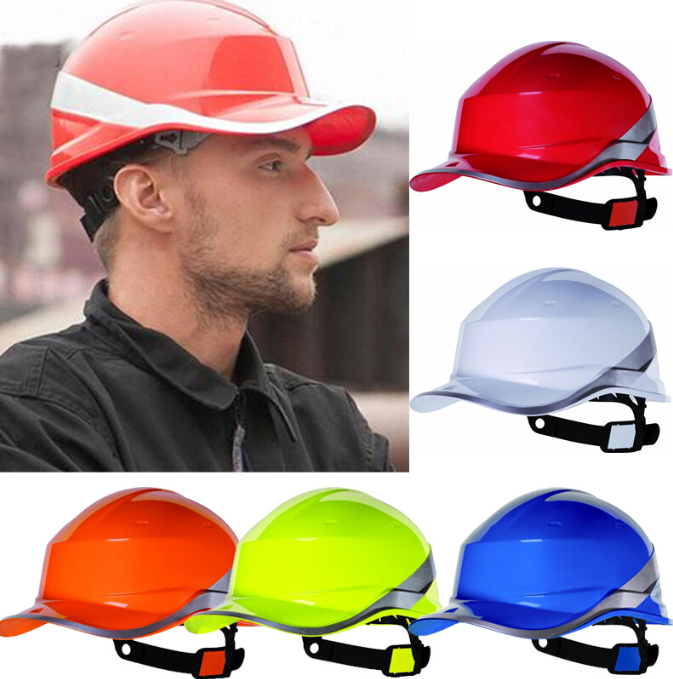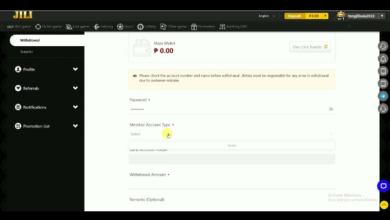What Class of Hard Hat Will You Need to Wear? Find Out the Best Protection against Minor Bumps
To protect against minor bumps in your job, you will need to wear a class of hard hat. In many industries, a Class E hard hat is recommended to provide the necessary protection against impacts.

This type of hard hat is specifically designed to protect against electrical hazards, making it suitable for jobs where there is a risk of exposure to low voltage electrical conductors. Wearing a Class E hard hat ensures that you are adequately protected and can work safely without compromising your well-being.
Contents
- 1 Hard Hat Classes
- 2 Importance Of Wearing The Right Hard Hat
- 3 Choosing The Right Hard Hat For Minor Bump Protection
- 4 Top Recommendations For Class G Hard Hats
- 5 Top Recommendations For Class E Hard Hats
- 6 Conclusion
- 7 Frequently Asked Questions
- 7.1 What Class Of Hard Hat Should I Wear For Minor Bumps In My Job?
- 7.2 Why Is It Important To Wear The Right Class Of Hard Hat?
- 7.3 What Are The Different Classes Of Hard Hats And Their Features?
- 7.4 When Should I Wear A Class G Hard Hat?
- 7.5 What Are The Key Features Of A Class E Hard Hat?
- 7.6 Can I Wear A Class C Hard Hat For Minor Bumps?
- 7.7 How Can I Determine The Most Suitable Class Of Hard Hat For My Job?
- 7.8 How Often Should I Replace My Hard Hat?
Hard Hat Classes
For protection against minor bumps on the job, it’s essential to understand the different classes of hard hats. Stay safe by choosing the appropriate hard hat class for your specific needs.
Class G Hard Hat
In understanding hard hat classes, the first class we will discuss is Class G. This class of hard hat, also known as a general hard hat, provides protection against impact, piercing, and low-voltage electrical shock. It is commonly used in industries such as construction, mining, and manufacturing where there is a potential for hazards such as falling objects or limited exposure to electrical currents.
Class G hard hats are designed to withstand impact energies of up to 2200 Newtons and provide protection against low-voltage (up to 2,200 volts) electrical shock. They are usually made of a lightweight and durable material, such as high-density polyethylene, to provide both comfort and protection to the wearer.
These hard hats typically have a short brim in the front to shield the wearer’s face from falling debris or rain. The suspension system inside the hard hat helps to absorb and distribute the force of impact, reducing the chances of head injuries. Class G hard hats are available in a variety of colors, making it easy to identify different job roles or responsibilities on a worksite.
It is important to note that even though Class G hard hats provide some electrical insulation, they are not suitable for use in situations where there is a high risk of exposure to electrical contact or arc flash incidents. In such cases, Class E or Class C hard hats should be used.
Class E Hard Hat
In the realm of hard hat classes, Class E hard hats are designed to provide additional protection against electrical hazards. These hard hats are authorized for use in high-voltage environments, offering utmost safety to workers in industries such as utility, electrical construction, and power generation.
Class E hard hats are engineered to withstand the same level of impact energies as Class G hard hats, protecting against up to 2200 Newtons of force. However, the key difference with Class E hard hats lies in their electrical shock protection capabilities. They provide protection against high-voltage electrical shock, with a higher threshold than Class G hard hats—up to 20,000 volts.
These hard hats are designed with additional insulation materials, such as non-conductive plastic, to minimize the risk of electrical conductivity. Furthermore, Class E hard hats have vented shells to ensure maximum airflow and prevent heat accumulation, making them comfortable to wear in a variety of working conditions.
Class C Hard Hat
Completing our understanding of hard hat classes is Class C. Class C hard hats offer suitable protection against impact and penetration hazards but provide no electrical insulation. As such, they are not intended for use in environments where there is any potential for electrical contact or electrical shock.
These hard hats, sometimes referred to as “conductive” hard hats, are typically made of aluminum or other conductive materials. This lack of electrical insulation allows these helmets to be more lightweight and conductive, making them perfect for industries such as manufacturing, automotive, and food processing where electrical shock risks are minimal.
Class C hard hats are not suitable for use in construction sites or locations with potential exposure to electrical hazards. It is crucial to carefully assess the work environment and select the appropriate hard hat class to ensure the highest level of protection for workers.
Importance Of Wearing The Right Hard Hat
Wearing the right hard hat is crucial for ensuring your safety in the workplace. Whether you work in construction, manufacturing, or any other industry where there may be potential hazards, protecting your head is essential. A hard hat acts as a shield, guarding your head from danger and minimizing the risk of serious injuries. Let’s explore three specific types of hazards and the corresponding hard hats that provide the necessary protection.
Protection Against Falling Objects
Falling objects are one of the most common hazards on job sites. Whether it’s construction materials, tools, or debris, a falling object can cause severe head injuries. That’s why it’s crucial to wear a hard hat specifically designed to protect against this type of hazard. Look for a hard hat with a secure suspension system and an impact-resistant shell. This combination will absorb the force of falling objects and distribute it across the helmet, preventing any direct impact on your skull.
Protection Against Electrical Hazards
Electrical hazards are another significant risk in certain workplaces, particularly those involving machinery or electrical installations. When working near live wires or in areas with potential electrical shocks, wearing a hard hat that provides insulation is paramount. Opt for a hard hat with dielectric properties, meaning it can resist the flow of electricity. This type of hard hat acts as a barrier, preventing electrical currents from reaching your head and reducing the risk of electric shock or injury.
Protection Against Minor Bumps
While falling objects and electrical hazards are more apparent dangers, minor bumps can still pose risks to your head. These bumps can occur due to low ceilings, protruding objects, or human error. Although less severe than other hazards, repetitive minor bumps can lead to long-term damage. To protect against these incidents, choose a hard hat with a built-in shock-absorption system. These hard hats are equipped with cushioning materials that absorb and dissipate the impact energy, minimizing the effect of minor bumps on your head.
In conclusion, wearing the right hard hat is crucial for your safety in the workplace. For protection against falling objects, opt for a hard hat with a secure suspension system and an impact-resistant shell. When dealing with electrical hazards, choose a hard hat with dielectric properties to insulate against electric shocks. Lastly, protect yourself from minor bumps by selecting a hard hat with a shock-absorption system. By wearing the appropriate hard hat for the potential hazards in your job, you can significantly reduce the risk of head injuries and maintain a safe working environment.
Choosing The Right Hard Hat For Minor Bump Protection
Choosing the right hard hat for minor bump protection is crucial in ensuring your safety on the job. Identify the appropriate class of hard hat you need to wear to guard against potential hazards.
When it comes to keeping yourself safe on the job, a crucial yet often overlooked aspect is wearing the right protective headgear. Whether you work in construction, manufacturing, or any field that exposes you to minor bumps, a proper hard hat is essential. But with various classes and features available, how do you choose the right one? In this article, we’ll discuss the key features of Class G, Class E, and Class C hard hats to help you make an informed decision and prioritize your safety.
Class G Hard Hat Features
If you frequently find yourself working in environments where you may come into contact with low voltage electrical hazards, a Class G hard hat is your go-to choice. These hard hats are built with high-density polyethylene shells that provide reliable protection against impacts and minor bumps. Their key strength lies in their ability to protect wearers from electrical currents up to 2,200 volts, ensuring your wellbeing even in potentially hazardous situations. Class G hard hats typically feature a 6-point suspension system for a secure and comfortable fit, and they come with adjustable chin straps for added stability.
Class E Hard Hat Features
When your work involves higher voltages, a Class E hard hat should be your top pick. Designed to shield you from electrical hazards up to 20,000 volts, these hard hats are a step up from Class G in terms of electrical protection. Class E hard hats share many of the same features as Class G, including a strong polyethylene shell and 6-point suspension system, but they provide an additional layer of safety for those facing higher voltage risks. These hard hats are ideal for professionals working in utilities, power generation, and other industries with a higher risk of electrical incidents.
Class C Hard Hat Features
For jobs that don’t pose any electrical hazards but still require reliable head protection, Class C hard hats are a suitable choice. These hats are primarily designed to protect against impact, bumps, and falling objects, making them ideal for workplaces such as construction sites, warehouses, and manufacturing plants. Class C hard hats typically feature a durable plastic shell that provides excellent resistance to impact and penetration. They also come with adjustable suspension systems for a customized fit, ensuring maximum comfort during long hours on the job.
Top Recommendations For Class G Hard Hats
In certain industries, being exposed to minor bumps and potential falling objects are a part of the daily routine. To ensure your safety and protect your head from possible injuries, it’s important to wear the right class of hard hat. Class G hard hats are specifically designed to provide protection against low-voltage electrical hazards, making them suitable for a range of job environments.
Pyramex
Pyramex is a trusted name in the industry, offering high-quality class G hard hats that prioritize both safety and comfort. Their hard hats are made from durable materials, providing excellent protection against minor bumps. With a wide range of adjustable sizes available, Brand A understands the importance of ensuring a secure and comfortable fit for every worker.
ERB
For those seeking a hard hat that goes above and beyond in terms of safety features, Brand ERB is an excellent choice. Their class G hard hats are not only designed to protect against minor bumps but also provide additional features such as chin straps for added security. ERB hard hats are made with lightweight materials, offering comfort without compromising on protection.
MSA
MSA is known for its commitment to producing durable and reliable safety equipment. Their class G hard hats are no exception. With a focus on durability and impact resistance, MSA hard hats are built to withstand harsh working conditions. The high-quality materials used in their construction ensure longevity and peace of mind for workers in various industries.
Top Recommendations For Class E Hard Hats
When it comes to protecting your head from potential hazards in the workplace, wearing the right class of hard hat is crucial. For jobs that involve exposure to high voltage electrical conductors, Class E hard hats are recommended. Class E hard hats provide added protection against electrical shocks, making them an essential safety accessory for workers in industries such as construction, utilities, and infrastructure.
Bullard
When considering Class E hard hats, Brand X is a top recommendation. Bullard has gained a reputation for its high-quality and reliable safety equipment. They offer a range of Class E hard hats that are designed to provide optimal protection while ensuring comfort and durability for long hours of wear. These hard hats are made with advanced materials that absorb and dissipate the impact of minor bumps or falls, reducing the risk of head injuries on the job.
Honeywell
Another leading brand in the market for Class E hard hats is Honeywell. Their hard hats are engineered to meet the highest safety standards and to withstand harsh environments. Honeywell offers a wide selection of Class E hard hats that prioritize both protection and comfort. With features such as adjustable suspension systems and padded interiors, workers can wear these hard hats with ease and confidence, even during extended periods of use.
Radians
Radians is also worth considering when searching for reliable Class E hard hats. This brand is renowned for its innovative designs and cutting-edge technology. Their Class E hard hats are designed to shield workers from minor bumps and ensure enhanced electrical protection. Radians hard hats incorporate advanced safety features, such as built-in impact resistance and arc flash protection. With Radians hard hats, workers can navigate their job sites with peace of mind, knowing they are well-protected.
Conclusion
So, when it comes to protecting yourself from minor bumps in your job, it’s crucial to choose the right hard hat. By understanding the different classes of hard hats and their specific purposes, you can ensure your safety in the workplace.
Remember, wearing the appropriate hard hat not only protects you from potential hazards, but also demonstrates your commitment to workplace safety. Stay informed, stay protected.
Frequently Asked Questions
What Class Of Hard Hat Should I Wear For Minor Bumps In My Job?
For minor bumps in your job, you should wear a Class E hard hat, which provides enhanced protection against impacts and low voltage electrical hazards.
Why Is It Important To Wear The Right Class Of Hard Hat?
Wearing the right class of hard hat is crucial for your safety at work as it ensures adequate protection against specific hazards, reducing the risk of serious head injuries.
What Are The Different Classes Of Hard Hats And Their Features?
The different classes of hard hats include Class G, Class E, and Class C. Each class offers protection against different types of hazards such as electrical, impact, and no electrical.
When Should I Wear A Class G Hard Hat?
You should wear a Class G hard hat when you are exposed to hazards like low voltage electrical shocks and when there is no risk of falling objects or impacts.
What Are The Key Features Of A Class E Hard Hat?
A Class E hard hat has all the features of a Class G hard hat, with additional protection against higher voltage electrical hazards, making it suitable for jobs with increased electrical risks.
Can I Wear A Class C Hard Hat For Minor Bumps?
No, a Class C hard hat does not provide protection against impact or electrical hazards. It is mainly designed for comfort and ventilation and should not be used in situations with potential head injuries.
How Can I Determine The Most Suitable Class Of Hard Hat For My Job?
To determine the most suitable class of hard hat for your job, assess the specific hazards you are exposed to, such as electrical or impact risks, and consult safety guidelines or professionals.
How Often Should I Replace My Hard Hat?
It is recommended to replace your hard hat every five years, regardless of the class, or if it has been subjected to an impact, penetration, or any damage that may affect its protective ability.




